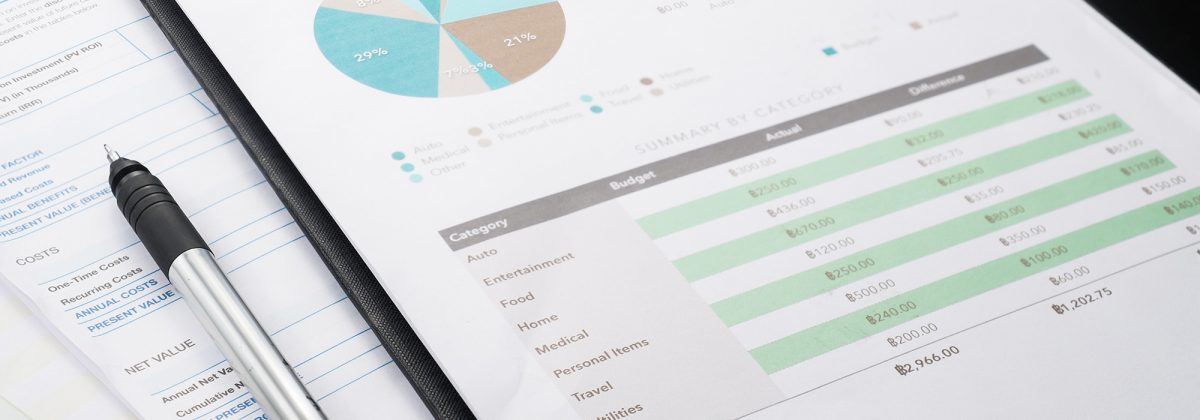Big Reports to Watch Out for in February 2020

Currency rates are highly influenced by macroeconomic factors. Geo-political events, economic indicators and natural catastrophes can impact investor perceptions. These perceptions impact demand and supply of financial assets and ultimately their prices. In this article we look at some of the major reports that could move the markets in February 2020.
Experienced forex traders rely on an economic calendar to stay abreast of all the important economic releases scheduled for the month. Such releases can result in market volatility, especially if they aren’t in-line with market expectations. A general market consensus is usually present before the release. In case the actual figures exceed or go below expectations, the price of the asset will go down or up, depending on the context of the release. For instance, a higher than expected inflation rate could be negative for a country’s economy, but higher than expected GDP growth is positive news.
Here’s a list of some potential market moving reports to keep track of in February 2020.
1. China Caixin Manufacturing PMI – February 3, 2020
A slowing economy, decline in new orders and low export volumes led to a decline in China’s manufacturing PMI for December 2019 to 51.5, from 51.8 in November 2019. The market expects a slight recovery to 51.7 for January 2020. The signing of the first-phase deal with the US on January 16, 2020, is expected to have helped.
2. Euro Area Manufacturing PMI – February 3, 2020
The IHS Markit Manufacturing PMI for the Eurozone stood at a revised figure of 46.3 in December 2019, indicating a straight 11-month contraction in the sector. Market consensus indicates a slight recovery to 46.9 in January 2020.
3. Russia GDP Growth Q4 2019 – February 3, 2020
Third quarter GDP growth in Russia stood at 1.7%, beating market expectations of 1.6%. Economists expect the annual GDP growth rate for 2019 at 1.8%. The country has a stable inflation rate, sustainable banking sector and a free-floating exchange rate system. The Russian Rubel is less dependent on oil prices now than ever before. Predictions for the Russian economy are optimistic for 2020.
4. Reserve Bank of Australia Interest Rate Decision – February 4, 2020
The central bank of Australia kept its cash rate stable at 0.75%, during the December 2019 meeting. However, policy makers have hinted at further rate cuts in 2020, to support the economy. The forecasted interest rate stands at 0.5% during this period of crisis. The bushfires have cost the economy billions of dollars, impacting consumer sentiment, tourism and retail spending. The Australian Dollar could be negatively impacted.
5. Canada Balance of Trade for 2019 – February 5, 2020
The trade deficit for Canada narrowed to C$1.1 billion in November 2019. This was the lowest gap since June 2019, as exports in energy products dropped, compensated by higher exports in fish, metals and intermediate food products. A trade surplus of C$0.5 billion is expected for December 2019.
6. The United States Balance of Trade for December 2019 – February 5, 2020
The trade deficit in the United States narrowed to $43.1 billion in November 2019. This was the lowest trade gap since October 2016, and much of it was due to a reduction of the gap with China. The market expects the trade deficit to stand at $50 billion by the end of 2019. This could be a contributor to positive US GDP growth in Q4 2019. However, economists warn that imports of capital goods are falling across sectors, which could be bad for investment.
7. Australian Balance of Trade for December 2019 – February 6, 2020
The trade surplus reportedly widened to A$5.80 billion in November 2019. However, it is expected to contract to A$5.60 billion in December 2019. Moody’s Analytics predicts that the bushfires will cost the economy more than $4.4 billion. Exports will suffer and so will the currency.
8. Germany Balance of Trade for December 2019 – February 7, 2020
Germany’s trade surplus declined to €18.3 billion in November 2019, due to a 2.9% reduction in exports to both EU and non-EU nations. This surplus is expected to further decline to €14 billion in December 2019. Germany’s growth declined in 2019, with GDP growth falling to 0.6%, the weakest since 2013. Economists believe that the massive trade surplus could be used to boost the economy. The signing of the phase-one deal between the US and China and a smooth Brexit could lend support to German manufacturers.
9. United States Non-Farm Payroll January 2020 – February 7, 2020
US Non-Farm Payrolls increased 145K in December 2019; missing predictions of Dow Jones economists at 160K. While the unemployment rate was steady at 3.5%, the jobless rate stayed at a 50-year low. For January 2020, predictions stand at 138K job additions. The ongoing decline payrolls is specifically attributed to declining manufacturing activity. If the report comes in below market expectations this time, the US markets and Dollar rate could experience sharp volatility.
10. UK Balance of Trade December 2019 – February 11, 2020
Great Britain registered a trade surplus of £4.03 billion in November 2019, due to growth in exports of 1.1%. This release will be crucial in determining further momentum of the UK economy after Brexit at the end of January 2020 and the monetary policy framework of the BoE for this year. The market expects that the Conservatives majority to have boosted business activities in December 2019. Predictions stand at a deficit of £6.6 billion by the end of 2019. The pound sterling is expected to react more to such news rather than Brexit itself.
11. UK GDP Growth Rate YoY 2019 – February 11, 2020
UK’s GDP expanded 1.1% on a YoY basis in November 2019, the weakest since 2012. Annual GDP growth is expected to remain at 1.1% for 2019. Traders might see a decline in pound value.
12. US Inflation Rate YoY January 2020 – February 13, 2020
US inflation rate increased to 2.3% in December 2019, up from 2.1% in November 2019. The market expects a further YoY increase to 2.4% in January 2020. This will be crucial for the interest rate policy direction adopted by the US Federal Reserve, which aims at a 2% inflation rate. An interest rate cut could on the cards in the future. The Swiss bank, UBS, predicts that the Fed will likely cut rates 3 times in 2020.
Stay prepared for these and other economic reports with an economic calendar. And, don’t forget to put in adequate risk management measures before placing trades.
Reference Links
- https://www.cnbc.com/2020/01/07/us-trade-deficit-at-43point09b-in-november-vs-43point6b-estimate.html
- https://www.theguardian.com/business/2020/jan/13/investors-bet-on-australian-dollar-falling-as-bushfires-hit-economy
- https://www.themoscowtimes.com/2019/12/25/russia-in-2020-economy-grow-faster-a68624
- https://www.thelocal.de/20200115/curtain-falls-on-germanys-golden-decade-of-growth
- https://in.reuters.com/article/us-germany-economy-gdp/german-growth-slows-sharply-in-2019-as-trade-disputes-bite-idINKBN1ZE0Y3?il=0
- https://www.cnbc.com/2020/01/10/us-nonfarm-payrolls-december-2019.html
- https://www.cnbc.com/2020/01/14/fed-could-cut-rates-3-times-as-tariffs-drag-down-us-growth-ubs.html
- https://tradingeconomics.com/







